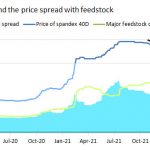 There is a growing trend of manipulating consumers who buy their clothing articles thinking they are buying genuine cotton clothing made from 100% cotton. But to their horror, their wearing experience turns out to be a nightmare. They soon realize that manufacturers are replacing the cotton in their favorite clothes with unreliable and uncomfortable fabrics and they have been victims of some mystery fabric. It looks and feels like cotton, but only at first. America’s cotton producers and importers have launched “CottonOrNothing” campaign to educate consumers about such malpractices. In view of lack of information on the labels, buyers are unable to know the exact composition of the fabric. In most cases synthetic fibres are mixed with cotton to reduce cost. Polyester is the predominant among them.
There is a growing trend of manipulating consumers who buy their clothing articles thinking they are buying genuine cotton clothing made from 100% cotton. But to their horror, their wearing experience turns out to be a nightmare. They soon realize that manufacturers are replacing the cotton in their favorite clothes with unreliable and uncomfortable fabrics and they have been victims of some mystery fabric. It looks and feels like cotton, but only at first. America’s cotton producers and importers have launched “CottonOrNothing” campaign to educate consumers about such malpractices. In view of lack of information on the labels, buyers are unable to know the exact composition of the fabric. In most cases synthetic fibres are mixed with cotton to reduce cost. Polyester is the predominant among them.
The US has accused China of polyesterization of world’s clothing. It is no secret that China has been stockpiling huge amounts of cotton for years. This hoarding has led to an increase in the use of polyester to the detriment of all cotton-producing countries. The US calls it “China’s nefarious manipulation of the world’s cotton supply.” China has also been criticized for paying out huge subsidies to its cotton sector. According to an estimate China paid subsidies to the tune of about $5.1 billion in the 2013-2014 cotton season.
China already produces most of the world’s polyester. Increase in its use directly benefits the country. Declining oil prices have made polyester cheaper and its demand is increasing. More and more fabric producers are using it along with cotton without even mentioning its use on the labels they put on the garments.
In terms of carbon footprint, one can apparently favour the case of polyester or synthetics. For example, it is estimated that a very small reduction in carbon footprint (0.4%) can be achieved from a shift to synthetic fibres by replacing 10% of cotton with 50:50 poly-cotton. The savings are because of the lower embodied carbon value associated with polyester production in comparison to cotton. However, it is possible that more significant savings may result from a major shift to synthetics, due to their relative physical properties that require less energy for washing, drying and ironing.
However, an ugly side of the polyester clothing has been brought into the public knowledge by Dr. Browne, a member of the US-based research network National Center for Ecological Analysis and Synthesis. His research analysis of the water discharge from washing machines has shown that it contains fibrous plastic material. Researchers have found that synthetic clothes release up to 1,900 tiny fibres or “microplastic” per garment every time they were washed. The microplastic was found to contain different types of polymers such as polyester, acrylic, polyamides (nylon).
The research has warned that microscopic plastic debris from washing clothes is accumulating in the marine environment and could be entering the food chain. This is because plastic smaller than 1mm has been found to be eaten by animals and getting into the food chain. Some polyester garments were found to release more than 1,900 fibres per garment, per wash. A large proportion of the fibres is getting into the environment as seen from the sewerage coming from washing clothes.
The above findings are a sort of wakeup call for those who consider the use of polyester more sustainable than cotton or other natural fibres. Polyesterization of clothes can be seen from the surging polyester content of wardrobes the world over and the culprit behind this is believed to be China. The need of the hour is, therefore, to discard polyester and look for natural alternatives with least carbon footprint.
G.D. JASUJA
Managing Editor





